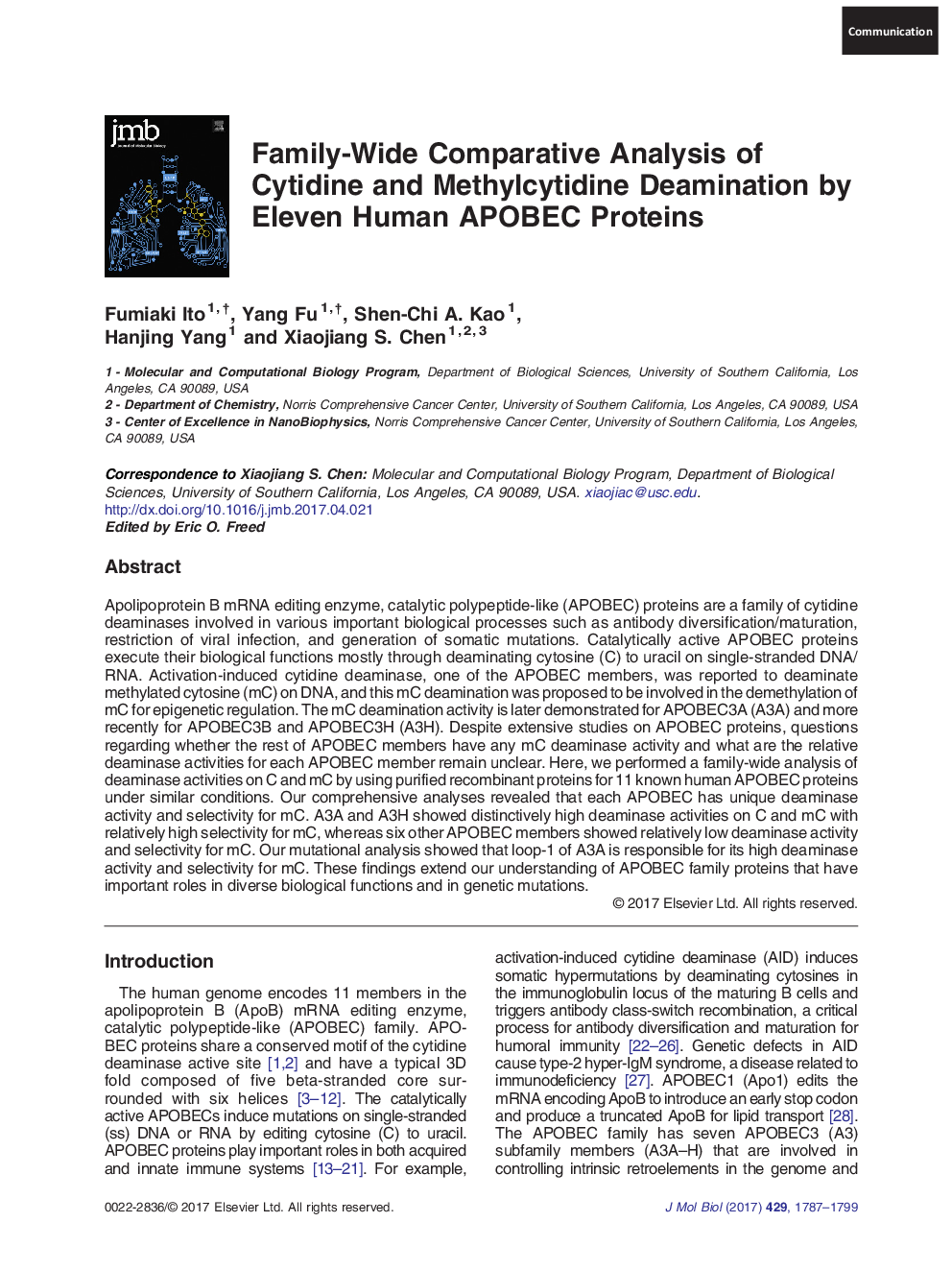| Article ID | Journal | Published Year | Pages | File Type |
|---|---|---|---|---|
| 5533292 | Journal of Molecular Biology | 2017 | 13 Pages |
â¢Comparative study of the in vitro activities on cytidine (C) and methylcytidine (mC) deamination of the APOBEC protein family was conducted.â¢Eight of the nine C deaminase active APOBECs show deaminase activity on mC.â¢The top three APOBECs with the highest C deamination activity are in the order of A3A, A3H, and A3C.â¢The top three APOBECs with the highest mC deamination activity are in the order of A3A, A3H, and A3B.â¢The top three APOBECs with the highest mC selectivity factor are in the order of A3H, A3A, and activation-induced cytidine deaminase. The lowest mC selectivity factor is observed in A3C.â¢Residues on loop 1 of A3A contribute critically to the high deaminase activity and high mC selectivity.
Apolipoprotein B mRNA editing enzyme, catalytic polypeptide-like (APOBEC) proteins are a family of cytidine deaminases involved in various important biological processes such as antibody diversification/maturation, restriction of viral infection, and generation of somatic mutations. Catalytically active APOBEC proteins execute their biological functions mostly through deaminating cytosine (C) to uracil on single-stranded DNA/RNA. Activation-induced cytidine deaminase, one of the APOBEC members, was reported to deaminate methylated cytosine (mC) on DNA, and this mC deamination was proposed to be involved in the demethylation of mC for epigenetic regulation. The mC deamination activity is later demonstrated for APOBEC3A (A3A) and more recently for APOBEC3B and APOBEC3H (A3H). Despite extensive studies on APOBEC proteins, questions regarding whether the rest of APOBEC members have any mC deaminase activity and what are the relative deaminase activities for each APOBEC member remain unclear. Here, we performed a family-wide analysis of deaminase activities on C and mC by using purified recombinant proteins for 11 known human APOBEC proteins under similar conditions. Our comprehensive analyses revealed that each APOBEC has unique deaminase activity and selectivity for mC. A3A and A3H showed distinctively high deaminase activities on C and mC with relatively high selectivity for mC, whereas six other APOBEC members showed relatively low deaminase activity and selectivity for mC. Our mutational analysis showed that loop-1 of A3A is responsible for its high deaminase activity and selectivity for mC. These findings extend our understanding of APOBEC family proteins that have important roles in diverse biological functions and in genetic mutations.
Graphical AbstractDownload high-res image (182KB)Download full-size image
